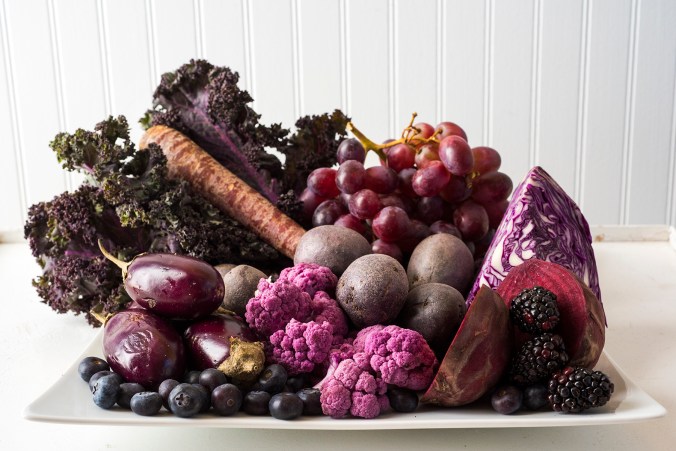Now that we potentially all have attention spans less than that of a goldfish – can’t believe you’re still reading this! – it is apparently more important than ever that we distill information down into small, digestible bits. One way we do this is by labeling everything, especially food. This is so we can recognize it, so we can boast about it, so we can post a photo of it, so we can pay more for it. So we can say, Oh, don’t mind me, I’m just eating my superfood salad over here. Goji berries, acai, spirulina, wheatgrass…the list of trendy branded superfoods goes on and on.

Purple foods are rich in anthocyanins, a specific type of antioxidant.
Western society, particularly America, has some serious food issues. We are collectively overfed and undernourished. We all know that obesity, heart disease, diabetes and other lifestyle diseases are on the rise, and yet still we consume on average more than twice the calories we need in a day. We’re overwhelmed by choice and information and the constant barrage of marketing thrown at us every second. We’re no longer able to think for ourselves.
“We are a society obsessed with the potential harmful effects of eating, according to the University of Pennsylvania psychologist Paul Rozin, renowned for his theories on the role that fear and disgust play in modern food culture. Overwhelmed by the abundance and variety of foods in our groceries, and flooded with competing health claims, we can’t help but make instinctive food-purchase decisions, subject to the whims of the latest trends and health scares. No wonder that, when confronted with ambiguities in health-based marketing claims, we fill in the gaps with inaccurate inferences, as the Cornell University economist Brian Wansink found in a 2006 study. Food companies bragging about supposed health benefits, such as low calorie count or low cholesterol, create what the influential study dubbed a “health halo,” a vague but positive glow that temporarily relieves our food-centered anxieties—at least long enough to get through checkout.”
-Michael Fitzgerald, Pacific Standard, May 26, 2017
Continue reading →




